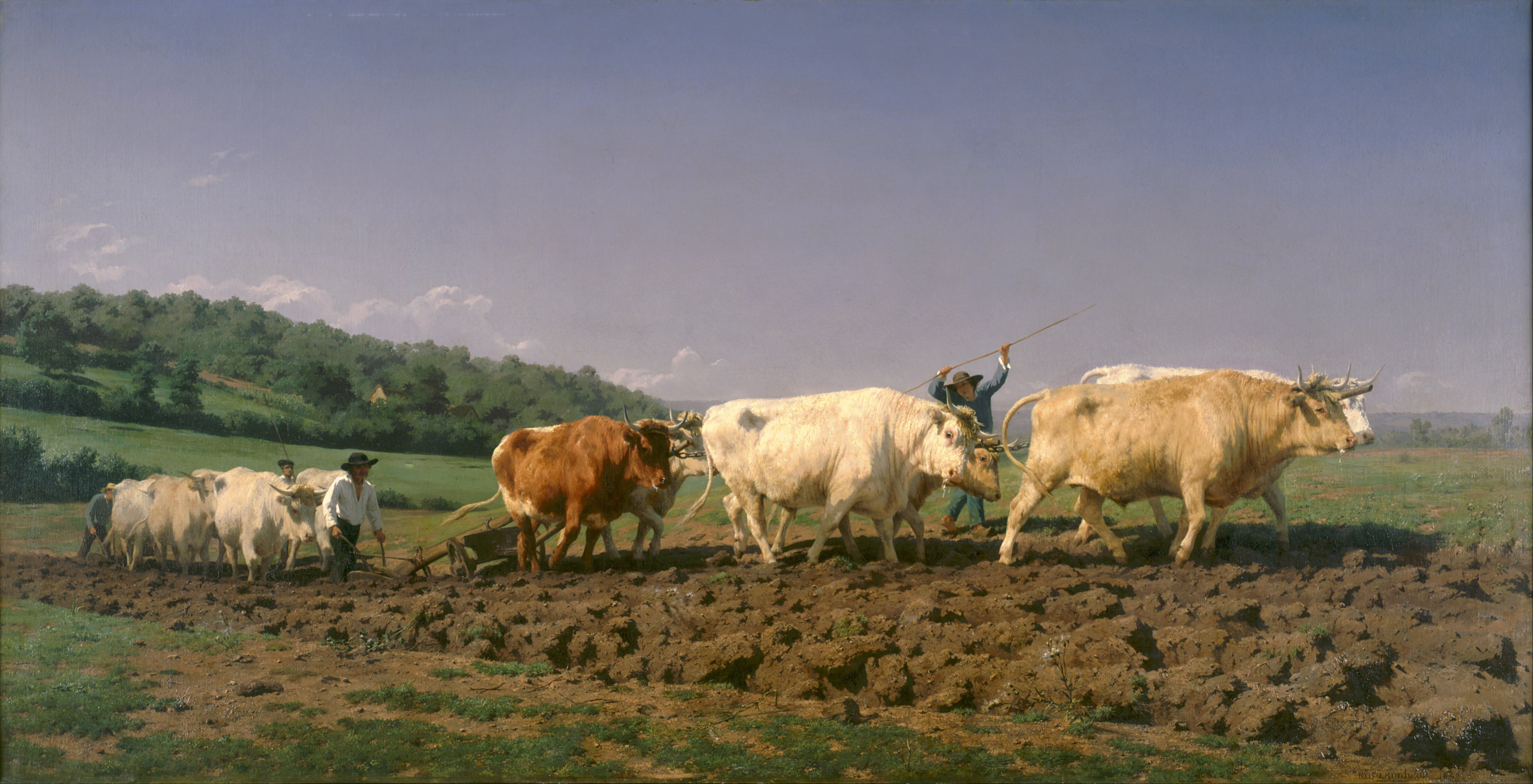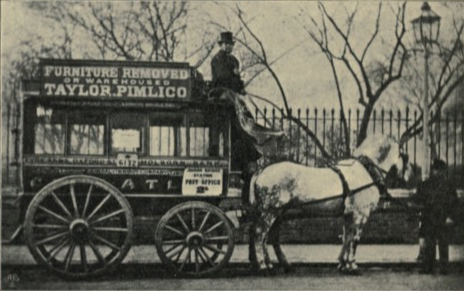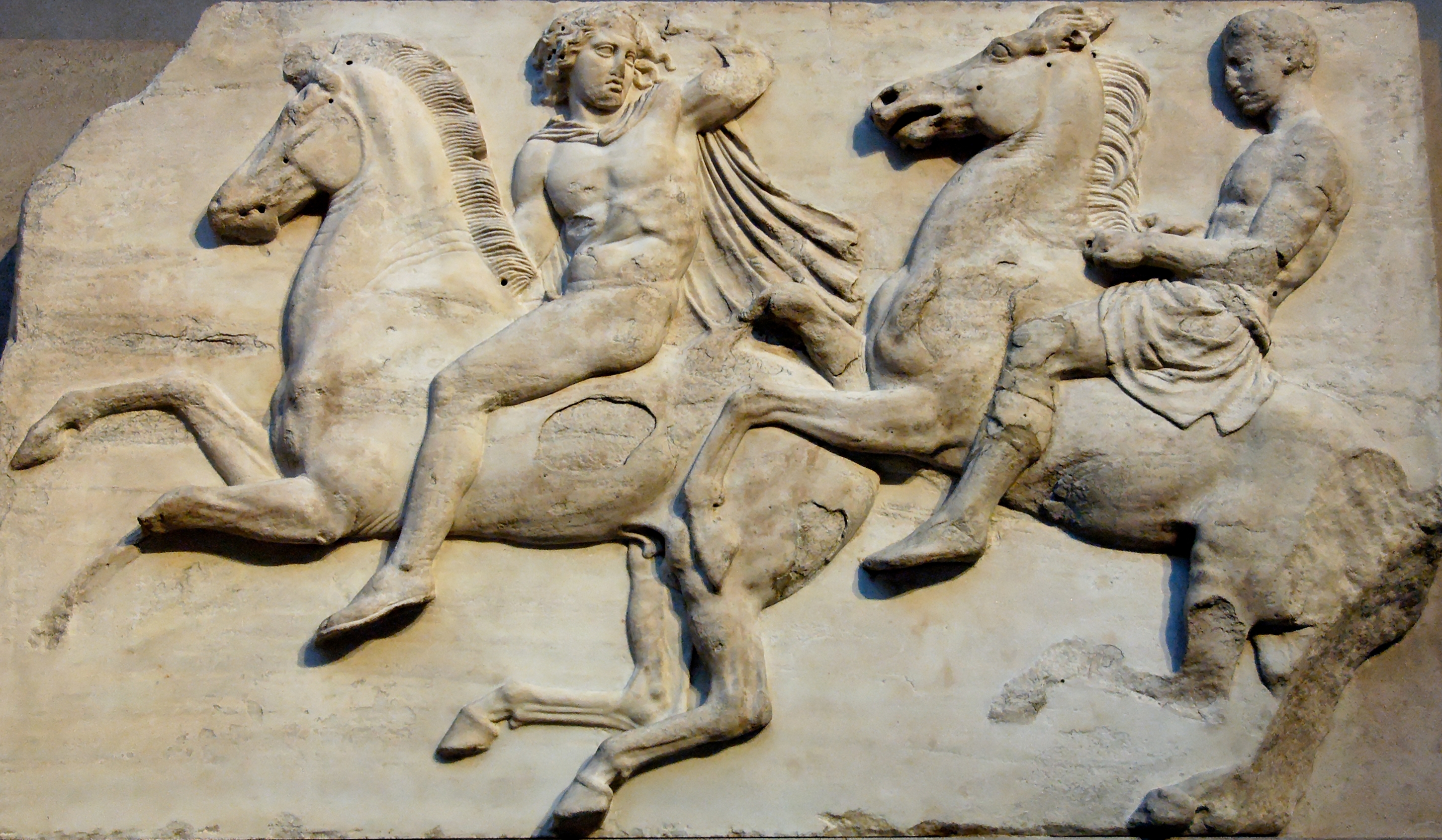|
The Horse Fair
''The Horse Fair'' is an oil-on-canvas painting by French artist Rosa Bonheur, begun in 1852 and first exhibited at the Paris Salon in 1853. The artist added some finishing touches in 1855. The large work measures . The painting depicts dealers selling horses at the horse market held on the Boulevard de l'Hôpital in Paris. The hospital of Salpêtrière can be seen in the left background. The prime version of the painting has been in the collection of the Metropolitan Museum of Art in New York since 1887, when it was donated by Cornelius Vanderbilt II. It is on view in Gallery 812. Background Bonheur painted 'The Horse Fair' from a series of sketches of Percherons, and other draft horses, which she had made at the on the tree-lined Boulevard de l'Hôpital, near the Pitié-Salpêtrière Hospital, which is visible in the background to the painting. She attended the market twice weekly for a year and a half from summer of 1850 to the end of 1851. She sought a from the Pari ... [...More Info...] [...Related Items...] OR: [Wikipedia] [Google] [Baidu] |
Rosa Bonheur
Rosa Bonheur (born Marie-Rosalie Bonheur; 16 March 1822 – 25 May 1899) was a French artist known best as a painter of animals ( animalière). She also made sculpture in a realist style. Her paintings include '' Ploughing in the Nivernais'', first exhibited at the Paris Salon of 1848, and now in the Musée d'Orsay in Paris, and '' The Horse Fair'' (in French: ''Le marché aux chevaux''), which was exhibited at the Salon of 1853 (finished in 1855) and is now in the Metropolitan Museum of Art in New York City. Bonheur was widely considered to be the most famous female painter of the nineteenth century. Bonheur was openly lesbian. She lived with her partner Nathalie Micas for over 40 years until Micas's death, after which she began a relationship with American painter Anna Elizabeth Klumpke. Early development and artistic training Bonheur was born on 16 March 1822 in Bordeaux, Gironde, the oldest child in a family of artists.Kuiper, Kathleen"Rosa Bonheur" ''Encyclopædia Britann ... [...More Info...] [...Related Items...] OR: [Wikipedia] [Google] [Baidu] |
Horsebus
A horse-bus or horse-drawn omnibus was a large, enclosed, and sprung horse-drawn vehicle used for passenger transport before the introduction of motor vehicles. It was mainly used in the late 19th century in both the United States and Europe, and was one of the most common means of transportation in cities. In a typical arrangement, two wooden benches along the sides of the passenger cabin held several sitting passengers facing each other. The driver sat on a separate, front-facing bench, typically in an elevated position outside the passengers' enclosed cabin. In the main age of horse buses, many of them were double-decker buses. On the upper deck, which was uncovered, the longitudinal benches were arranged back to back. Similar, if smaller, vehicles were often maintained at country houses (and by some hotels and railway companies) to convey servants and luggage to and from the railway station. Especially popular around 1870–1900, these vehicles were known as a 'private omni ... [...More Info...] [...Related Items...] OR: [Wikipedia] [Google] [Baidu] |
Edwin Henry Landseer
Sir Edwin Henry Landseer (7 March 1802 – 1 October 1873) was an English painter and sculptor, well known for his paintings of animals – particularly horses, dogs, and stags. However, his best-known works are the lion sculptures at the base of Nelson's Column in Trafalgar Square. Life Landseer was born in London, the son of the engraver John Landseer A.R.A. and Jane Potts. He was something of a prodigy whose artistic talents were recognised early on. He studied under several artists, including his father, and the history painter Benjamin Robert Haydon, who encouraged the young Landseer to perform dissections in order to fully understand animal musculature and skeletal structure. Landseer's life was entwined with the Royal Academy. At the age of just 13, in 1815, he exhibited works there as an “Honorary Exhibitor”. He was elected an Associate at the minimum age of 24, and an Academician five years later in 1831. He was an acquaintance of Charles Robert Leslie, who d ... [...More Info...] [...Related Items...] OR: [Wikipedia] [Google] [Baidu] |
Ernest Gambart
Jean Joseph Ernest Theodore Gambart (12 October 1814 – 12 April 1902) was a Belgian-born English art publisher and dealer who dominated the London art world in the middle of the nineteenth century. Life and career Gambart was born in Kortrijk, the son of a printer, binder and bookseller. By the age of 19, he had moved to Paris where he established his own print and papermaking business. He soon became known to the well-established Goupil print publishers, for whom he moved to England in 1840 to establish a branch in London. He soon struck out on his own again in 1842, this time in partnership with one Mr. Junin, to form the company Gambart & Junin which specialised in the import of art prints from Europe. The company was a success, and by early in 1844, the company was established as publishers as well as importers and exporters. Art publisher Gambart soon gained a reputation as a leading publisher of fine art prints. He established fair and mutually beneficial agreements with ... [...More Info...] [...Related Items...] OR: [Wikipedia] [Google] [Baidu] |
French Francs
The franc (, ; sign: F or Fr), also commonly distinguished as the (FF), was a currency of France. Between 1360 and 1641, it was the name of coins worth 1 livre tournois and it remained in common parlance as a term for this amount of money. It was reintroduced (in decimal form) in 1795. After two centuries of inflation, it was redenominated in 1960, with each (NF) being worth 100 old francs. The NF designation was continued for a few years before the currency returned to being simply the franc. Many French residents, though, continued to quote prices of especially expensive items in terms of the old franc (equivalent to the new centime), up to and even after the introduction of the euro (for coins and banknotes) in 2002. The French franc was a commonly held international reserve currency of reference in the 19th and 20th centuries. Between 1998 and 2002, the conversion of francs to euros was carried out at a rate of 6.55957 francs to 1 euro. History The French Franc tr ... [...More Info...] [...Related Items...] OR: [Wikipedia] [Google] [Baidu] |
Château De Fontainebleau
Palace of Fontainebleau (; ) or Château de Fontainebleau, located southeast of the center of Paris, in the commune of Fontainebleau, is one of the largest French royal châteaux. The medieval castle and subsequent palace served as a residence for the French monarchs from Louis VII to Napoleon III. Francis I and Napoleon were the monarchs who had the most influence on the palace as it stands today. It became a national museum in 1927 and was designated a UNESCO World Heritage Site in 1981 for its unique architecture and historical importance. History Medieval palace (12th century) The earliest record of a fortified castle at Fontainebleau dates to 1137. It became a favorite residence and hunting lodge of the Kings of France because of the abundant game and many springs in the surrounding forest. It took its name from one of the springs, the fountain de Bliaud, located now in the English garden, next to the wing of Louis XV. It was used by King Louis VII, for whom Thomas Be ... [...More Info...] [...Related Items...] OR: [Wikipedia] [Google] [Baidu] |
Haymaking In The Auvergne
''Haymaking in the Auvergne'' (French: ''Fenaison d'Auvergne'' or ''La fenaison en Auvergne'') is an 1855 oil painting by French artist Rosa Bonheur. It measures . After her first great artistic success, ''Ploughing in the Nivernais'' exhibited in 1849, Bonheur showed studies of two new paintings to French Minister of Fine Arts Charles de Morny, Duke of Morny. He rejected one, ''The Horse Fair'', and commissioned ''Haymaking in the Auvergne'' instead. Bonheur focussed on completing ''The Horse Fair'' first, and De Morny attempted to change his mind after its good reception at the Paris Salon in 1853. The painting depicts the loading of a hay onto a cart pulled by four oxen. The beasts to the right wait patiently, attended by a man in wide-brimmed hat. Other men are cutting grass with scythes, while women rake up the hay, and other people use pitchforks A pitchfork (also a hay fork) is an agricultural tool with a long handle and two to five tines used to lift and pitch or ... [...More Info...] [...Related Items...] OR: [Wikipedia] [Google] [Baidu] |
Charles De Morny, Duke Of Morny
Charles Auguste Louis Joseph de Morny, 1er Duc de Morny () (15–16 September 1811, Switzerland10 March 1865, Paris) was a French statesman. Biography Morny was born in Switzerland, and was the extra-marital son of Hortense de Beauharnais (the wife of Louis Bonaparte and queen of Holland) and Charles Joseph, Comte de Flahaut, making him half-brother of Emperor Napoleon III and grandson of Talleyrand. His birth was duly registered in a misleading certificate, which made him the legitimate son of Auguste Jean Hyacinthe Demorny, and born in Paris on 23 October 1811, and described as a landowner of Saint-Domingue. M. Demorny was in fact an officer in the Prussian army and a native of St. Domingue (Modern day Haiti), though he owned no land there or elsewhere. Morny was educated by his grandmother, Adelaïde Filleul. After a brilliant school and college career the future duc de Morny received a commission in the army, and the next year he entered the staff college. The comte de ... [...More Info...] [...Related Items...] OR: [Wikipedia] [Google] [Baidu] |
Parthenon Frieze
The Parthenon frieze is the high-relief Pentelic marble sculpture created to adorn the upper part of the Parthenon’s naos. It was sculpted between c. 443 and 437 BC, most likely under the direction of Pheidias. Of the 160 meters (524 ft) of the original frieze, 128 meters (420 ft) survives—some 80 percent. The rest is known only from the drawings attributed to French artist Jacques Carrey in 1674, thirteen years before the Venetian bombardment that ruined the temple. At present, the majority of the frieze is at the British Museum in London (forming the major part of the Elgin Marbles); the largest proportion of the rest is at the Acropolis Museum in Athens, and the remainder of fragments shared between six other institutions. Casts of the frieze may be found in the Beazley archive at the Ashmolean Museum at Oxford, at the Spurlock Museum in Urbana, in the Skulpturhalle at Basel and elsewhere. Construction Plutarch’s ''Life of Pericles'', 13.4–9, informs ... [...More Info...] [...Related Items...] OR: [Wikipedia] [Google] [Baidu] |
Ancient Greece
Ancient Greece ( el, Ἑλλάς, Hellás) was a northeastern Mediterranean civilization, existing from the Greek Dark Ages of the 12th–9th centuries BC to the end of classical antiquity ( AD 600), that comprised a loose collection of culturally and linguistically related city-states and other territories. Most of these regions were officially unified only once, for 13 years, under Alexander the Great's empire from 336 to 323 BC (though this excludes a number of Greek city-states free from Alexander's jurisdiction in the western Mediterranean, around the Black Sea, Cyprus, and Cyrenaica). In Western history, the era of classical antiquity was immediately followed by the Early Middle Ages and the Byzantine period. Roughly three centuries after the Late Bronze Age collapse of Mycenaean Greece, Greek urban poleis began to form in the 8th century BC, ushering in the Archaic period and the colonization of the Mediterranean Basin. This was followed by the age of Classical G ... [...More Info...] [...Related Items...] OR: [Wikipedia] [Google] [Baidu] |
Eugène Delacroix
Ferdinand Victor Eugène Delacroix ( , ; 26 April 1798 – 13 August 1863) was a French Romantic artist regarded from the outset of his career as the leader of the French Romantic school.Noon, Patrick, et al., ''Crossing the Channel: British and French Painting in the Age of Romanticism'', p. 58, Tate Publishing, 2003. In contrast to the Neoclassical perfectionism of his chief rival Ingres, Delacroix took for his inspiration the art of Rubens and painters of the Venetian Renaissance, with an attendant emphasis on colour and movement rather than clarity of outline and carefully modelled form. Dramatic and romantic content characterized the central themes of his maturity, and led him not to the classical models of Greek and Roman art, but to travel in North Africa, in search of the exotic. Friend and spiritual heir to Théodore Géricault, Delacroix was also inspired by Lord Byron, with whom he shared a strong identification with the "forces of the sublime", of nature in ... [...More Info...] [...Related Items...] OR: [Wikipedia] [Google] [Baidu] |
Théodore Géricault
Jean-Louis André Théodore Géricault (; 26 September 1791 – 26 January 1824) was a French painter and lithographer, whose best-known painting is ''The Raft of the Medusa''. Although he died young, he was one of the pioneers of the Romantic movement. Early life Born in Rouen, France, Géricault was educated in the tradition of English sporting art by Carle Vernet and classical figure composition by Pierre-Narcisse Guérin, a rigorous classicist who disapproved of his student's impulsive temperament while recognizing his talent. Géricault soon left the classroom, choosing to study at the Louvre, where from 1810 to 1815 he copied paintings by Rubens, Titian, Velázquez and Rembrandt. During this period at the Louvre he discovered a vitality he found lacking in the prevailing school of Neoclassicism.See , p. 1. Much of his time was spent in Versailles, where he found the stables of the palace open to him, and where he gained his knowledge of the anatomy and action of horses. ... [...More Info...] [...Related Items...] OR: [Wikipedia] [Google] [Baidu] |








.jpg)

